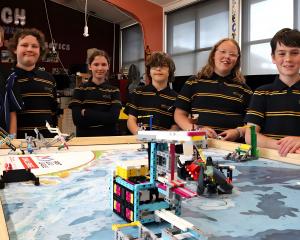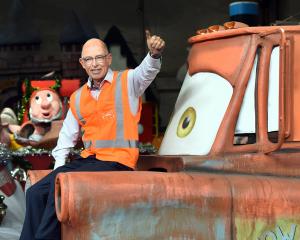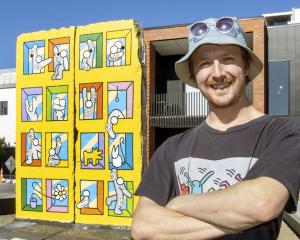F-16 fighter pilot Captain Ethan Smith, of the United States Air Force, estimated he had less than one second to relax and enjoy the view of Wānaka Airport during the Warbirds Over Wānaka International Airshow at Easter.
Capt Smith, who is based in Korea and Japan, said in a media interview in Wānaka on Sunday evening he was looking forward to driving more sedately back to Christchurch on Easter Monday so he could appreciate the scenery.
Two USAF F-16 Fighting Falcons opened the Warbirds show each morning and Capt Smith returned for a reprise after the lunch break.
The super-manoeuvrable aircraft were based at Christchurch Airport and took between 10 and 20 minutes to get into Wānaka’s airspace. Pilots were returned to Wānaka Airport by the Royal New Zealand Air Force.
F-16 fighters were first built in 1976 and are capable of reaching Mach 2 speeds.
Capt Smith said everything about Wānaka had to be planned weeks in advance.
"We have it thought out before because at that speed you can’t make it up on the spot. Every point, every turn is mapped," he said.
Capt Smith said the F-16s were "one of the best aircrafts, hands down" and it had always been his dream to be a fighter pilot.
He has been "working the airshow gig" for 13 months, on a two-year assignment, and wants to continue flying in the next phase of his USAF career — "wherever it takes me, so long as I am not flying a desk".
Being called to perform at Wānaka was "phenomenal" because it was considered a world-class event, he said.
He joined the USAF the same year Wānaka had its last airshow, in 2018, and has earned the nickname, or call sign, Bantam.
"Bantam is 100% about my stature. I am a shorty. I am five foot six [1.67m]," he said.

That would not happen this time, Capt Smith said.
"I wish, but we are bit tight on gas. All the gas here has been used on the show."
For the first passes, each F-16 had an allowance of about three minutes of gas, "so you do what you are doing and get out ... That’s about 2000 pounds [1130litres of jet fuel]".
During his afternoon solo shows, he was refuelled so he could turn a three-minute display into 10 minutes.
In combat, with tanks being filled in the air, technically an F-16 could stay airborne for a long time.
"The only limitation is myself, how long the pilot can last."
Bringing the planes from Japan to New Zealand took about 13 and a-half hours of flying time.
The team stopped over in Guam after a four-hour flight. The flight on to New Zealand took nine and a-half hours, with the aircraft refuelling eight times between Guam and New Zealand, he said.
If there was any plane at the airshow he would like to fly, it would be the Goodyear FG-1D Vought Corsair, he said.
However, he said he would not be able to just step into the cockpit.
"I bet not. There might be a few hours reading some books."
Capt Smith said he was keen to return in 2026.
After doing many gigs in Dubai, Seoul, India, Bahrain, Japan and Alaska, he considered Wānaka’s alpine terrain fantastic and unique.












